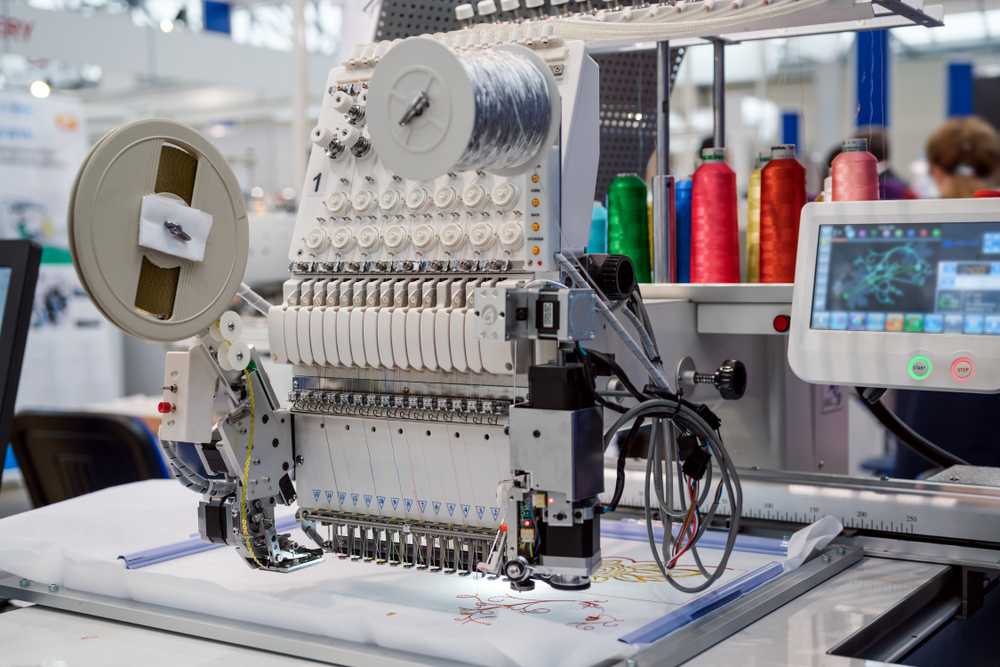Cost Effective Digitizing for Embroidery: Accuracy and Detail
Simplifying the Art of Needlework Digitizing: Step-by-Step Overview
As innovation proceeds to advancement, the digitization procedure has become much more available, permitting fanatics to bring their complex designs to life with simplicity. In this overview, we will unwind the complexities of embroidery digitizing, breaking down each action methodically to improve the procedure and encourage both novices and seasoned embroiderers alike.
Recognizing Needlework Digitizing Software
Needlework digitizing software program acts as an essential device for transforming intricate styles into digital formats suitable with needlework machines, facilitating accurate sewing and modification. This specialized software application permits individuals to import different photo data styles, such as JPG or PNG, and convert them right into embroidery machine-readable styles like DST, EXP, or PES - Digitizing for Embroidery. By using features like stitch editing, rug choices, and thread color option, digitizing software application enables customers to manage every element of the style procedure
In addition, advanced embroidery digitizing software uses devices for creating intricate layouts, changing stitch thickness, and incorporating detailed details. Individuals can likewise preview the layout prior to stitching it out, guaranteeing accuracy and reducing errors. Additionally, numerous software application programs supply automated features that aid simplify the digitizing procedure, saving effort and time.
Recognizing the abilities of needlework digitizing software application is essential for attaining top quality cause needlework tasks. By grasping this tool, embroidery lovers and professionals can unleash their imagination and bring intricate styles to life with accuracy and effectiveness.

Selecting the Right Design Data
After familiarizing yourself with the capacities of embroidery digitizing software application, the following essential action in the process is choosing the right layout data for your project. Digitizing for Embroidery. When picking a design data for needlework digitizing, it's necessary to take into consideration the intricacy of the design, the size of the end product, and the type of material you will be functioning with
For detailed styles with fine details, a high-resolution photo or vector documents is advised to guarantee that the embroidery device can accurately duplicate the layout. Additionally, the dimension of the last item plays a substantial role in picking the best style data. Bigger layouts may call for higher resolution documents to preserve quality and intensity.
Furthermore, the type of fabric you will certainly be stitching on influences the selection of style data. Various fabrics might require changes in the design file to ensure that the stitches are correctly lined up and the style appears as planned. By very carefully choosing the ideal design file based upon these variables, you can establish on your own up for an effective needlework digitizing procedure.
Digitizing Devices and Methods
Utilizing specialized software and precision strategies, digitizing devices are crucial in changing complex layouts right into embroidery-ready data. website here Embroidery digitizing software, such as Wilcom, Hatch, or Embrilliance, supplies the necessary system to convert art work into stitch data. These programs provide features like stitch editing, rug options, and text devices to guarantee the design converts seamlessly onto textile.
One of the key techniques in digitizing is creating a clear path for the needlework device to comply with. This entails digitizing each element of the layout with precision, establishing stitch kinds, thickness, and directions. By making use of tools like digitizing tablet computers or software-specific plugins, embroiderers can achieve a high degree of precision in their digitized designs.
Furthermore, grasping the art of rug sewing is critical for producing quality needlework. Underlay stitching maintains the textile click over here and creates a structure for the layout, guaranteeing that the end product is both aesthetically enticing and resilient. By comprehending these digitizing devices and strategies, embroiderers can boost their craft and bring elaborate designs to life with precision and effectiveness.
Personalizing Stitch Kinds and Directions
The choice of stitch types can significantly impact the total appearance and structure of the embroidered layout. By strategically incorporating these stitch types, embroiderers can achieve deepness and measurement in their layouts.
Moreover, the direction of stitches plays a crucial role in Homepage enhancing the aesthetic allure of the last embroidery. By exploring with various stitch angles and patterns, embroiderers can bring their layouts to life with exceptional detail and complexity.
Testing and Refining Your Digitized Design
To make certain the accuracy and high quality of your digitized style, detailed testing and refinement are important action in the needlework digitizing process. As soon as you have actually completed the digitization of your layout, it is crucial to examine it prior to waging the actual embroidery. Checking permits you to identify any potential concerns such as string breaks, stitch density issues, or design distortions that may impact the last outcome.

After testing, it is very important to refine your digitized design based on the comments from the test sew-out. This might include tweaking sew settings, readjusting densities, or making adjustments to the total design to achieve the wanted end result. By iterating via screening and refinement, you can fine-tune your digitized design to excellence prior to progressing with the real needlework procedure.
Conclusion
In final thought, mastering the art of needlework digitizing calls for an extensive understanding of the software application, picking the ideal design file, using digitizing devices and techniques, personalizing stitch types and instructions, and screening and improving the digitized layout. By adhering to these steps, embroiderers can simplify the digitizing procedure and create top quality embroidered designs with accuracy and effectiveness.